I have experienced this improved hearing when hiking three of Waterton’s Front Range Six because each peak taught a spiritual lesson. Lesson One: Preparation Matters When I accepted the invitation to hike Bertha Peak, I was not fit enough to ascend twelve hundred meters on a 15 km out-and-back trail. I hate being embarrassed more than I hate working out, so I started getting up early and doing a high intensity workout in my basement consisting of thousands of squats and lunges to get my legs, heart, and lungs ready for stairclimbing at high altitude. I then followed my workout with a 40-minute walk with my wife before biking to work. The spiritual parallel is that I also needed to build a routine of prayer and spiritual reading and do it every day (even when I didn’t feel like it). When I started the permanent diaconate program, I did not have prayer routine, but St. Paul tells us to pray unceasingly and give thanks in all circumstances. This takes discipline and practice, and prayer became part of my morning workout. The liturgical calendar exemplifies the need for preparation beautifully. Advent and Lent provide sacred times to make way for the Lord’s presence at Christmas and Easter. The mountaintop experience (like Christmas morning) is short-lived, but the weeks of preparation are essential to experiencing the fullness of incarnational joy throughout the year. Daily prayer, even when it’s dry and boring (perhaps especially when it’s dry and boring) tunes us in to God’s frequency. Lesson Two: It’s Easy to Get into Trouble Mt. Galwey was a relentless, 7-hour battle against gravity that mirrored the truism, “There is no plateau in the spiritual life.” You are either climbing or losing momentum. The Front Range Six are not technically climbs, but scrambles. Erosion creates scree, a collection of broken rocks that can become slippery and dangerous. On the way up, a dislodged piece of shale can quickly turn into a deadly projectile (helmets are recommended). On the way down, I slipped on a slab of dust covered shale and gashed my hip. It was an ordinary step, like the countless other steps I had taken that day. As I scramble towards God, the most dangerous hazards I face are the simple ones, the spiritual equivalent of a sprained ankle. My pride makes it easy to step into sin, and the step that puts my soul in danger will look and feel like every other step I have taken successfully because the devil uses my overconfidence against me.
This could have been my peak of disappointment, but God revealed to me what he wanted me to see: the reward is not up to me. My job is to put in the work, ascend towards him, and accept what he offers. At the foggy peak, I remembered a question from Rabbi Harold Kushner’s The Lord is My Shepherd: Do you love me because I am God and give you everything you want, or do you love me because I am God? My routine of daily prayer enabled me to receive this message about humility and recognize how often I superimpose my desire on God’s plan. Much of what I see depends upon what I am looking for. If I want to find reasons to doubt God or be angry with the Church, I don’t have to look very hard. But if I trust that God’s love means that he always has something to teach me, I will find that too, not because I am naïve, but because he promised, “Seek and you shall find.” I sought Him in the mountains, and He was there (but He was with me in the basement, too).
1 Comment
In the winter of 2023, St Mary’s parish council, after reviewing the diocesan synodal synthesis, invited an interested group of parishioners to start the conversation of pastoral renewal in our parish. As part of the process, a group of 24 individuals began to discuss, reflect on and research parish renewal. Through our research, we discovered the dynamic parish ministry, Divine Renovation. Originating in Canada, Divine Renovation currently has a worldwide reach and extensive resources and stories to share. Central to Divine Renovation’s ministry is Alpha. Following prayer and discernment, study of Divine Renovation, consultation with our pastor and further exploration of the Alpha program, the renewal group decided to host an 11-week Alpha session for our parish. Many parishioners were unfamiliar with the current Alpha program and were interested in knowing more about this new ministry in our parish. We were thrilled when 63 people registered! 42 came as guests who fully received, and the remaining 21 received as they gave generously of themselves in various volunteer positions such as the core planning team, prayer, registration, advertising, hospitality, set up, food donations, and so on. For those unfamiliar with Alpha program and looking for inspiration for parish pastoral renewal, this is a wonderful renewal resource and experience. It particularly addresses priorities 1 and 2 of the diocese’s renewal plan: Forming missionary disciples in Christ and Becoming a Church of encounter and witness. Alpha invites others to know Christ and to learn the great story of Jesus and His Church (Priority 1). It is the perfect opportunity to build relationships that listen to others’ lived experiences (Priority 2). This is the heart of Alpha. Leaders have many chances to exemplify Christ's values to lead with mercy and passion. Divine Renovation deems Alpha vital to their mission, a sentiment we share based on our experience. Alpha fosters an inviting space for engagement, nurturing discipleship and leadership. It's a program that lays out Christian basics, and is a doorway to faith for those who are searching. It is open to anyone and is meant to be a place where people can come up with honest questions to engage in community, compelling content, and conversation. One of our major wins was the fact that this group heard the gospel message, was invited to start or renew a relationship with God, had the opportunity to be empowered by the Holy Spirit, and was given tools in the areas of prayer, scripture, discernment, spiritual warfare, evangelization, and healing. At the end of Alpha, individual participants discerned their next steps, with different options in the areas of growing in personal holiness and mission. As our session drew to a close, the Alpha core team created an exit slip to provide feedback from our first Alpha experience. Here are only some of the highlights: Alpha was welcoming and not judging." Alpha is just a piece in the puzzle of the bigger picture of Parish Renewal for St. Mary’s in Brooks. It has been one of our first steps, with many more steps to come. Parish Renewal is a marathon, and we need to have a long-game mindset. It has been recommended that we run Alpha 3-4 times, as Alpha has the potential to be the pump from which our parish draws to flow into our other ministries. Divine Renovation encourages this and reports that they have seen parish ministries and groups flourish after successfully running multiple Alphas. With this in mind, our parish has just completed our second Alpha session this fall and we look forward to Alpha remaining at the heart of our parish. We are also thrilled to share that as a result of our first Alpha session, our local Catholic school: St Joseph’s Collegiate, has begun an Alpha for Teens initiative. Stay tuned about this exciting development through Faithfully! Submitted by Christine Kleiboer & Bonnie Annicchiarico, parishioners of St. Mary's Church in Brooks.
For converts, the journey on the road to Roman Catholicism is as varied as their individual personalities and experiences. My journey was a rather circuitous route, due in part to a neurological disorder – but I’m getting ahead of myself. Our three children are now adults, but when our youngest was just starting school, she began displaying sudden twitches and jerky movements which seemed out of her control. Our initial concern soon turned to alarm as the movements became more pronounced, and as she also began making odd sounds as well. We checked with our family doctor, who referred us to a pediatric psychiatrist over the Christmas break. After a lot of listening and observing, he gave us his diagnosis: Tourette Syndrome. In some ways it was a comfort to have a name for the condition, but we also felt anxious about what the future might hold. My husband and I read everything we could get our hands on about Tourette Syndrome and found out that most people learn to cope with this neurological disorder, though it isn’t an easy condition to live with. We also learned that the involuntary movements and sounds are called motor tics and vocal tics. School became a nightmare for our daughter. She felt humiliated, confused, sad and, most of all, concerned about “disturbing” the other students with her frequent vocal and motor tics. Finally, we made the decision to homeschool her, in an attempt to salvage our collective sanity. I quit my teaching job.  Laura & Bill Locke Laura & Bill Locke I’ve noticed that, from my childhood, when faced with distressing experiences I seek solace in books. This was no exception. As we launched into the new experience of homeschooling, I buried myself in my spare time in the works of authors I have long loved, including C. S. Lewis. One line from Lewis’ book The Problem of Pain had a profound impact on me: “Pain removes the veil. It plants the flag of truth within the fortress of a rebel soul.” As I sat one day at our dining room table, reading and absorbing those words with my twitching, barking daughter beside me working on her math lesson, it did indeed feel as if a veil was being ripped off my old perceptions of myself, of God, and of the world. I knew I needed to go deeper and find a better way to cope with this new reality. C. S. Lewis led me to one of his favorite authors, G. K. Chesterton, whose books I ate up with an eagerness that my husband found rather baffling. Fascinated by Chesterton’s conversion to Catholicism, I then started reading the works of other notable converts – Cardinal John Henry Newman, Dorothy Day, Thomas Merton, and Scott Hahn. My concept of our relationship with God was challenged by their insights. I grew up in the United Church, and my husband and I attended Protestant Churches with our children during the early years of our marriage. But after reading the stories of famous converts to Catholicism I felt drawn, like a magnet, to a little Catholic church in our neighborhood. I had never been inside, even though we had lived just two blocks away for almost twenty years. My husband decided to join me, and as we entered the church building together one Sunday, as Mass was about to begin, we had absolutely no idea what to expect. At first it felt very foreign, but we kept attending. Before long, we found ourselves signed up for a Rite of Christian Initiation for Adults course (RCIA), with a group of other spiritual explorers. We were increasingly captivated by what we heard every Tuesday night at the RCIA class. In the Catholic Church we found people who were unafraid to gaze on Christ’s suffering, and as I followed their gaze, I was confronted with a love that shook me to the core. I felt like I finally understood Chesterton’s astute comment: “The Catholic church is bigger on the inside than it is on the outside.”
As the highly anticipated "Restoring the Feminine Heart" Women's Conference approaches (May 26-27), the Beloved Daughters Ministry team shares with Faithfully about their event and the ministry's mission. Read on to discover what this exciting conference has in store. Beloved Daughters For those who have never heard of the Beloved Daughters Ministry, it's a lay-run women's ministry established in 2020 to support women at every stage of life as they rediscover their identity as beloved daughters of God. Initially created to host annual women's conferences within the Diocese of Calgary, the ministry adapted to an online presence due to the COVID-19 pandemic. Through social media platforms, they share blog posts (written by many local women), weekly Sunday reflections, and host Advent and Lenten mini-retreats at various parishes. The ministry offers connection, relatability, and encouragement to women, helping them stay rooted in the truths of their identity in God. “Restoring the Feminine Heart” The ministry conference team, guided by prayer and discernment, has carefully chosen the perfect topic and speakers for this inaugural event. With the theme “Restoring the Feminine Heart”, they are eager to delve into the true identity and unique gifts that women possess. "We hope to be able to provide the beginnings of restoration and healing to women who have experienced wounds in these areas, especially where in today’s society there is much confusion and distortion regarding the identity of the individual." said Rikka, one of the founders of the Beloved Daughter Ministry. The team also hope to shed light on God’s thoughtful design in creating humans male and female in His image and likeness, as well as the gift that we are to each other. Women going to the conference will be examining how pressures from society, others, and even themselves, have hindered the ability to live out their truest identity. They will unpack how they can freely live out of the giftedness of our femininity. Jake & Heather Khym The team is beyond excited to welcome guest speakers Heather Khym (most commonly known as a co-host on the Abiding Together Podcast) and Jake Khym (Registered Psychologist and co-host of the Restore the Glory Podcast). Jake and Heather Khym are a married Catholic couple from Abbotsford, BC. They are the founders of Life Restoration Ministries. Their ministry is devoted to creating opportunities for Jesus to encounter people, empowering disciples to deepen their faith. They achieve this through evangelization and formation focused on unlocking the heart. On their podcasts, Jake and Heather regularly share personal stories of their own journey towards healing and restoration with great vulnerability. When asked why Jake & Heather Khym for their first women’s conference, Rikka revealed, “The three of us first heard Jake Khym speak at Rise up 2014 in Calgary and his message blew us away. He spoke into each of our hearts differently, but prominently.” The launch of the all-female Abiding Together Podcast, featuring Heather Khym, piqued the team's interest even more. One of their team members found great healing through listening to the Restore the Glory Podcast, hosted by Jake Khym (a registered counselor), and Dr. Bob Schuchts (a registered psychologist). “In listening to the honesty and relatability in which they share their experiences, combined with their professional and ministerial background, we immediately knew that having them speak at this conference would be just what was needed to create an environment of hope and healing for the attendees at our conference.” "We believe that Jake and Heather can beautifully demonstrate the harmony and unity that can exist within relationships as we each journey towards wholeness."
A Pentecost Gift Mothers, daughters, grandmothers, granddaughters, aunts, nieces, sisters, and girl-friends! If you are a woman over the age of 18 then there is a place for you at this conference! Nursing infants, and female adolescents 14 years and older coming with their mother or guardian, are also welcome. Maria added, “This conference is sure to be an enriching and impactful weekend filled with connection, rest and restoration. You can look forward to being amongst a community of lovely women gathering, learning and praying together!” It is truly a gift for our Diocese to have this conference offered in Calgary, and especially on the weekend of Pentecost. The Holy Spirit will be present and ready to shower the women in attendance with an abundance of graces!
Let us spend the National Week of Family and Life (NFLW) 2023 united in prayer, reflection, and action, demonstrating our active support for family and life. Indeed, families are “guardians of life” when we love one another within our families and in wider society when we show kindness toward and care for the vulnerable and marginalized.
Note: Day 1 can begin anytime! We want to ensure everybody has the opportunity to join in and take part in this wonderful experience. Don't worry if you missed the start of NFLW, you can join in and start participating in the daily prayers and activities from any day.
Source: National Life & Family Week Daily Prayers & Activities, CCCB, 2023
“It started when a friend of mine told me about a backpack program for human trafficking survivors in Florida.” shared Kristin Fahlman, a parishioner of St. Michael's in Calgary, “I thought it was interesting, but didn't think about it again for several years.” It wasn’t until that one fateful evening when she attended a movie screening organized by the Catholic Women’s League at her church. It wasn't just any film; "Over 18" documents society's damage caused by pornography industries across North America and beyond. “On the way to the screening, God reminded me of the backpack program in Florida. And that I should start a similar program here in Calgary.” shared Kristin. After the movie screening, Kristin tried to speak to Paul Rubner, who had been invited as an expert local speaker at the time, but there were just too many people who wanted to do the same. So she went home, trying to put it out of her mind. But God persisted. Shortly after, Kristin was invited to a human trafficking workshop and, seemingly by divine intervention, her normally packed schedule was free. At the workshop, she again noticed Paul, who provided a presentation on the issue of human trafficking in the Calgary and Alberta context. She decided then that if he was available at the end of the workshop, this was the person she needed to speak with. "When I explained my idea, Paul was extremely enthusiastic and, as it turns out, he was the key person in Calgary who would know how to implement a distribution system for the backpacks. He suggested involving the Catholic Women's League, a group I had just recently joined." What followed was a series of meetings and brainstorming sessions between Kristin, a lawyer with a passion for social justice and deep compassion for a segment of society that very few people were aware of, and Paul, at the time a human trafficking investigator who had spent the last decade working with survivors of human trafficking and exploitation. Paul had an understanding of the needs and issues faced by survivors, along with the social agencies that sought to help them - but he knew there was more that could be done. All that was required was a group, or individuals, that had a realistic understanding of the issue that he could lend his experience and advocacy to. “God has lined it all up for us every step of the way," said Kristin. Paul added, “We want survivors of human trafficking to recognize the strength inside of them and to realize that they are loved and accepted right in this moment.” Long story short, IWIN - an acronym for 'I'm Worth It Now' - was born in 2019 with the support of the Catholic Women’s League (CWL). This program's mission is to make an impact on those who are often forgotten: survivors of sexual exploitation and domestic sex trafficking. And over three years later, the need for their ministry has only grown. Their services now extend to non-profit agencies in two provinces - with a vision to expand even further. “The idea was to provide a tangible way to show trafficking survivors in Calgary, the vast majority of whom were born and raised in Canada, that people care and ‘nice things’ didn’t always have to come with strings attached.” shared Paul, who at the time was actively working with survivors and many of the agencies offering services for them. “While IWIN doesn’t provide services directly, they provide backpacks containing essential items to the agencies that do. And given that these agencies are not-for-profit, every little bit of help they can receive means more resources they can devote to programming and helping their participants.” said Paul, adding, “One such agency in Calgary has received over $13,000 in ‘backpack support’ from IWIN in the past 2 1/2 years. The contents of the backpacks are items that the agency would have provided anyway, which means that those funds could be re-directed into other areas of the program.” IWIN also has partnerships with an agency in Edmonton and one in Saskatoon, who also exist to provide services to trafficked and exploited women, although the Calgary program is by far the largest. Survivors of human trafficking who received IWIN backpacks ware always filled with gratitude and appreciation for the kindness they had been shown. "This backpack meant more than just a bag full of clothes. It gave me hope there is still good in this world". "Thank-you so much for helping me to feel a bit more human and a bit more like I matter". "It was a really nice surprise when I wasn't expecting it and I feel like it's a great act of kindness and I'd love to take part in something like that one day. It's really nice to get something and to feel like you don't have to give anything in return." "This signifies that if one individual or organization believes in us, perhaps we can begin to contemplate having faith in ourselves." The success of the IWIN program is largely attributed to the commitment of multiple groups and organizations who are dedicated to helping them achieve their goals, with a large portion coming from the Catholic Women's League in Alberta and Saskatchewan. “Human trafficking can happen to any family in Canada and is happening mainly to Canadian citizens." Paul added. This National Human Trafficking Awareness Day, February 22, it's critical that we consider why 95% of the trafficking survivors found in Calgary are Canadian-born. Our sisters and daughters are not exempt from the reality of human trafficking – so, it's essential that our brothers and sons join us in finding a solution. Let us not forget to open up the conversation about human trafficking, despite how uncomfortable it may seem.
This St. Valentine’s Day, Jessica and Joseph Cyr celebrate a champagne wedding anniversary of sorts, with 14 years of marriage on the 14th. In that time, just as their family has grown to include five children, so has their extended family of faith. The ceremonial ‘passing of the beaver pelt’ from one newlywed couple to another is a seemingly silly tradition that the Cyrs started in their Calgary Catholic community shortly after they were married, and never imagined would still be going strong today. “I thought it would be fun to start a tradition within the Catholic community,” said Joseph Cyr. “I had the beaver hanging on my wall. It was unique to me, no one else had a homemade beaver pelt. I thought, ‘hey we can use that, and it’s something very Canadian, something that represents our heritage.’” At the time of publication, 48 couples, with more than 100 children combined, have written their names and wedding dates on the back of this storied beaver pelt. 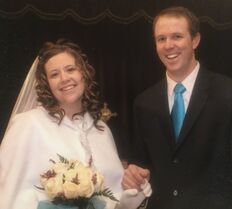 Jessica and Joseph Cyr Jessica and Joseph Cyr History of the Pelt Back when Joseph was in high school, he earned his trapping license and trapped a beaver in a creek near his hometown of Pincher Creek, Alberta. He proceeded to prepare the beaver’s pelt for mounting onto plywood. While he had hoped to continue pursuing this hobby, the beaver was the only animal he ever trapped. Shortly after he and Jessica married, Joseph hung the pelt in the living room of their first home, but as it happened Jessica did not exactly share Joseph’s taste in home decor. Joseph then had the idea to gift the pelt to another young couple; Jessica was very receptive to the notion and thus a tradition was born. The Cyrs presented it to Jared and Natalie Fehr at their wedding reception with the stipulation that they must display the pelt prominently in their home until the next Catholic couple involved with their young adult community married, at which point the ceremonial bestowing of the beaver pelt would continue.
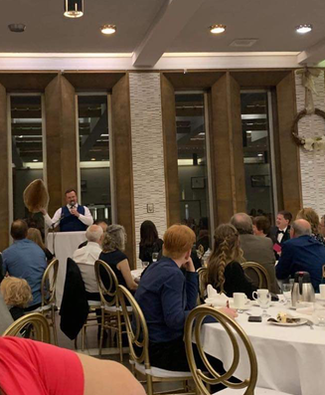 Adam Pittman presenting the Beaver pelt at the Toner's wedding. Adam Pittman presenting the Beaver pelt at the Toner's wedding. The beaver’s lodge Currently, the pelt is in the possession of Brian and Jennifer Toner. Per the directive, it is displayed above their living-room television in Cupertino, California – one hour South of San Francisco. Adam Pittman presented the pelt on behalf of the Catholic community at their wedding reception in November in Saskatoon. “For us, receiving the beaver pelt was a huge honour,” said Jennfier Toner. “It felt like our marriage was being uplifted by the prayers and thoughts of the whole group, whether we knew each couple or not. We also felt excited, because it is a delightfully ridiculous ‘gift and re-gift ' process that we now get to partake in,” Toner added.
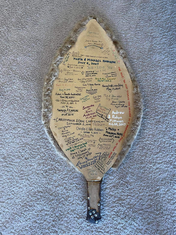 The Beaver Pelt (2023) The Beaver Pelt (2023) A silly or serious tradition? In his own way, Fr. Cristino Bouvette feels very much part of the beaver pelt tradition. He has celebrated the weddings of at least half of the couples associated with the beaver pelt, and witnessed time and again the passing on of the pelt at wedding receptions. “It is clearly a silly tradition, but not merely a silly tradition. It is also a sign of married life being one of openness to the wider community. People marry for the sake of expanding the community of believers, expanding the community of the world,” said Fr. Bouvette. “In receiving this memento, albeit tacky, it’s a sign of belonging to a wider community outside of your married life, which is a very important testament to the mystery of marriage. You give yourself to the other for the sake of the other, and then in that one flesh union that opens up to all others,” Fr. Bouvette added. “It’s such a great sign to me of our ever-expanding faith community.”
Take a half hour break and watch Salt & Light Media’s documentary on Madonna House, a community of about 200 lay men, women, and priests who have dedicated themselves to Christ by living out promises of poverty, chastity, and obedience. Witness their joy and be inspired to find that same joy in Christ where you have been called to serve Christ in your ordinary life. >> Watch video now
On February 2nd, 2023, religious from eight different communities gathered to celebrate the World Day of Consecrated Life on the Feast of Presentation of the Lord. It was a joy-filled day with the celebration of the Eucharist, meaningful conversations that deepened connections, and a delightful meal shared between those present.
As human beings with both body and soul, we take good care of ourselves through healthy relationships, especially our relationship with God, and with the help of science. Watch this video and see how both science and the Faith connect.
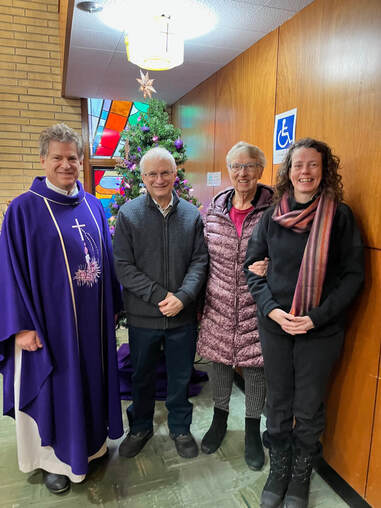 L to R: Fr. Kevin Tumback (Pastor, All Saints Parish in Lethbridge), Jim Manzara, Esther Lambert, and Helen Manzara L to R: Fr. Kevin Tumback (Pastor, All Saints Parish in Lethbridge), Jim Manzara, Esther Lambert, and Helen Manzara This is supposed to be a Christmas party, but among the seated rows of female inmates women are sobbing quietly. As they cry, a sympathetic arm might be briefly placed around someone’s shoulder or a toilet roll passed from hand to hand to wipe up tears. On a bitterly cold night in December, I was privileged to attend the 2022 Christmas service at the Lethbridge Correctional Centre. Here I am witnessing the dichotomy of life in prison – isolation within community, loneliness with companionship, abandonment but also accompaniment. This is the essence of prison ministry. The Lethbridge Correctional Centre houses inmates serving sentences of less than two years. According to the Alberta Government website, it has a capacity of just under 400 persons. For the past six years the Centre’s coordinating chaplain has been Rev. Anna Braun, a Baptist Minister. During the Covid lockdown, Braun and a co-chaplain ministered to the prison population on their own, (a time Braun discovered to be surprisingly meaningful). However, now that restrictions are lifted, ministry volunteers from several area churches are once again active within the prison community. Among them is a Catholic group, Friends of the Lethbridge Correctional Centre, presently led by Jim and Helen Manzara from All Saints Parish. They are supported by other volunteers from both Lethbridge parishes. These stalwarts lead worship services once a month and rosary prayer twice a week. In addition, Father Derek Remus hears confessions and participates in a program called Exploring Your Faith which is part teaching and Q&A. Once a year all the Christian denominations gather to present a Christmas Service which includes carol singing, an inspirational message, and treat bags for the inmates and staff alike. This service is unusual in that it includes the entire prison population unlike the weekly services at which attendance is voluntary. Visiting a jail can be daunting initially. I was asked to leave all personal possessions in a locker. After signing in and passing through a metal detector, I was escorted by a guard along wide hallways to a brightly-lit gymnasium. The gym had been gaily decorated earlier by some of the female inmates. There was even a Navajo themed crèche. For the first while volunteers formed an assembly line to fill paper bags with donated treats like foodstuff, stationery and (separately) coveted bars of Irish Spring soap! Each brown sack had been painstakingly decorated by an elementary school student. They displayed messages of hope, Scripture verses, and even corny jokes. Braun explained that the students knew who they were creating the bags for and put their hearts into the task. Once the bags were filled a small group of volunteers departed to bring music and treats to the segregated units. As the gym door closed behind them, a ripple of anticipation ran through the remaining volunteers. Musicians took their places and singers gathered around. Suddenly the gym door was unlocked and the first unit entered. Men dressed in blue jumpsuits or dark sweats, with ubiquitous orange plastic clogs clustered onto a section of bleachers. As carol singing commenced, I saw toes tapping, swaying to the beat and the occasional person singing along. One unit had a ‘choir’ who sang Silent Night beautifully. Appreciative applause followed every song. Then Braun rose to offer a few words, her familiarity with the prisoners immediately apparent. She spoke about Jesus being poor, homeless, misunderstood and rejected by his community. She reminded everyone that Jesus came to bring light for our world and that each of us can be a bearer of light too. She said, “If you think you can’t be a light in this place just stand in a dark cell and look at that thin strip of light under the door. See what an impact a little light can have.” To another group Braun quoted John 3:17, telling them that though the judicial system might have condemned them, Jesus did not. One of the most affecting moments came when Braun told a women’s unit, “When you think about the birth of Jesus, one little baby doesn’t seem significant. Until you have one, then you realize it’s everything.” It was immediately clear from the tearful reactions how many people were struck by the comparison. After her message, Braun led each group in a cheerful rendition of This Little Light of Mine and the inmates left smiling, expressing thanks for their gift bags and offering good wishes to all. The powerful message of Christmas seems to fade in the cold months which follow; perhaps more quickly in jail than elsewhere because residents are so isolated. All the more reason for Christians to heed Jesus’ words, “I was in prison and you came to visit me” (Matthew 25:36). Post-Covid there is a pressing need for more volunteers in prison ministry. I asked a couple of the current volunteers what they enjoy most about the work. Repeatedly I heard how thankful the prisoners were. “The happy faces”, Helen Manzara said. “They are not a captive audience but they are captivating in so many ways”, Esther Lambert said. Lambert went on to elaborate, “There are often of a mindset that they are not lovable, not worthy. When I explain that I come to see them because in them I see the face of God, their expressions turn me to tears. I know of no other group where I would experience that love and appreciation.” So as you make your 2023 resolutions, please consider becoming a “light in the darkness” and thereby finding Jesus among those who are imprisoned.
Watch this video and go beyond merely having a picture-perfect family Christmas dinner. Let Christ be at the center of all things.
“Help me!” Out of a dark bathroom in a long term care home, I heard a plaintive cry and froze. I was there to bring the Eucharist, nothing more. I turned to seek out an attendant and heard again, “Don’t leave me!” Heart pounding, I crept forward, identified myself loudly and turned on the lights to find an elderly woman on the toilet. With shaking hands I cleaned her and helped her to stand up. She leaned against me as we washed our hands. Secretly I thought, “I have wiped Christ’s bottom.” Jesus said that whatever we do for the least of his brethren we do for him. This is true whether we cook for our family, give alms to the poor or serve at Mass. However, it might be particularly true when we are called to move out of our comfort zone and give more than we intended to. For example, when we offer to buy a street person a coffee and he chooses a whole meal with it. Or we call to check in on a friend and she spills out her woes for an hour. When we give of ourselves we prefer to have a measure of control over the experience but that is not how God gives of himself. God gave his only son, and Jesus gave his lifeblood for us. God continues to give constantly and completely, so we are called to do the same. This kind of self-emptying service is what Pope Francis called “the art of accompaniment”. “The Church will have to initiate everyone – priests, religious and laity- into this “art of accompaniment” which teaches us to remove our sandals before the sacred ground of the other.” (Evangelii Gaudium 169) I am coming to understand The Art of Accompaniment through a series of talks given by Fr. Tim Boyle at St. Martha’s Parish in Lethbridge . So far Fr. Boyle has noted that accompaniment is not quite the same as caregiving, although it might include that. To accompany someone is to first of all recognize that God is with them. As guest speaker Reno Guimond said, “We are not bringing God to anyone. God has been there long before we show up. We go to see where God is.” Besides recognizing God in each person, we also need to understand how God works in the world. Fr. Boyle encouraged his listeners to imagine God “delighting” in the world as he created it. “God has invested himself in creation,” Fr. Boyle said. “This is not a one-time event but an evolving artwork. If God accompanies us as an artist not as an engineer then God is vulnerable to the unfolding of Creation… God suffers in the process… God chooses to spend himself on creation.” This form of sacrificial support was expressed ultimately by God becoming human and Jesus’ death and resurrection. For us, sacrificial giving of ourselves is often a challenge. Society dictates that one must preserve oneself, must learn to ‘Say No’, and ration one’s time and energy. Yet Creation shows otherwise. Fr. Boyle used the examples of salmon making death runs upstream to spawn, and sunflowers drying up to produce seeds for food and for procreation. “Like salmon and sunflowers, every creature, in order to reach their full potential, needs to empty themselves out”, Fr. Boyle said. So how is this achieved in practical terms? How does one accompany another person, whether continuously or when called upon? It begins when we accept God’s accompaniment of us. This happens through grace which Fr. Boyle suggests is “like manna – something given by God every day which cannot be stored up but only taken advantage of that day.” Grace is not a weapon or superpower, it doesn’t enhance our abilities. Indeed it requires us to first accept that we have no ability without God. We are flawed and vulnerable beings made precious by God’s acceptance. It is God’s grace that sustains us, sanctifies us. When we understand this dynamic we are better prepared to handle the vulnerability of others, to accept it, and handle it gently. Since my first incident of extreme vulnerability in long-term care, my ministry partner and I have been called upon to assist a few others at their times of greatest need, in life and even approaching death. While I still feel my heart pounding each time, the experiences have been deeply humbling. I know God is helping me learn how to cherish the sacred ground of others.
If we could imagine a few cowboys praising the Lord with country music and coming to Mass on horseback with their best hats, faith in Alberta could not be summed up with these clichés. (Although, they are true from time to time!). So who are the believers in Alberta? In the land of cowboys and mountains, God has also pitched his tent. Now let’s zoom in on the reality of believers in a part of Western Canada. Alberta is a "land of immigration", says Ambroise, who has been living in Calgary for a little over a year. Naturally, the young man, originally from France, was looking for a community to join when he arrived from Montreal. His goal was to find young people and a community that would connect him to his French heritage. "I haven't been able to find the best of both worlds - people my age with whom to practice my faith or with whom to talk to about religious topics. However, I have felt a bit at home since I think that speaking one's native language allows you to really connect with yourself and your identity." People "at Mass!" Ambroise attends the English-speaking young adult community of St. Francis Xavier Chaplaincy, as well as the only French-speaking parish in Calgary, Sainte-Famille. These two communities are not necessarily opposed to each other, but both offer their own richness and spiritual nourishment. However, "particularly linking oneself to a parish" remains complex. "St. Francis Xavier is quite typical of the relatively young English-speaking communities in North America - a kind of return to a certain root in the sense of a search for a connection to the “origins”, also quite intellectualized. It's a certain return to the roots where excess is removed.” "At Sainte-Famille, it's more family-oriented. Older. There are fewer young people. There is this balance with families and a lot of interculturality and involvement of multicultural people in the life of the parish. It facilitates the integration of newcomers! I think there's a nice welcome.” "Indeed, in the pews on Sundays, there are the Knights of Columbus, newcomers from the African community, French "expats", families from Quebec, seniors from Alberta’s French-speaking community who have been involved for 30 or 40 years and, in the midst of all these beautiful people, an Iraqi parish priest of more than ten years who belongs to the Chaldean Church. They are really beautiful people at Mass! What strikes Ambroise most in his experience of faith in the West? "Close-knit communities! For example, Sainte-Famille is a close-knit community mainly because it is a welcoming community for French-speaking Christians. In a desire to integrate, I think that as a newcomer, you have the desire to get involved.” He also had this impression of a "close" and tightly woven community during his visit to Lac Sainte-Anne, a well-known pilgrimage site where Pope Francis visited last summer. Parish atmosphere connected to local life The pastor of Sainte-Famille Parish, Monsignor Noël Farman, recently visited several classes in some French Catholic schools in Calgary to have discussions about the sacraments and faith. Some young people asked him about how one can get baptized. It was such a great opportunity to connect. In fact, it is the children from several classes who will be making the decorations for the major liturgical feasts at Sainte- Famille Parish again this year. This is something that does not occur in Quebec, but which seems to be lived organically in Alberta. In 2003, the Conseil de l'Education de la Foi Catholique (Council of the Education of the Catholic Faith amongst Francophones) chez les francophones de l'Alberta (CÉFFA) was born out of a need for "faith education among francophones". CÉFFA offers materials in French, resources to accompany the four French-language school boards in Alberta, and, above all, "a network of collaboration, exchange and training for those involved in the dioceses, school boards, schools and parishes". All of this "in a dynamic that complements the family, school and parish plans", as stated on their website. The Alberta church is also rolling up its sleeves to respond to the call of Pope Francis by going to the peripheries. For example, there are prayer vigils on Tuesday evenings at the L'Arche community in Calgary (and probably elsewhere). Elizabeth House, an initiative of the Sisters of Charity of St. Louis and the Diocese of Calgary since 1996, is a home for single mothers who are pregnant or have a baby and provides a space for living and rehabilitation. Catholic Christian Outreach (CCO) has a strong presence on Alberta university campuses, and the founding couple is originally from Alberta. In short, for many, faith echoes the spiritual and social needs of Alberta's territories and offers a venue for action and prayer. Urban Christians, rural Christians "I come from the area around St. Paul [two hours from Edmonton], where there is a fairly strong Francophone presence," explains Claudie-Anne, married with three children. The surrounding villages were all founded by priests who brought in French Canadians at the beginning of the last century. So the faith has shaped our countryside." Like many places in Canada, she senses a decline in Catholic religious practice. However, Alberta does not seem to be having a "quiet revolution." "The transmission of the faith has happened without any sudden interruption." As a result, the "vast majority" of people around her believe in God, whether they are Catholics or other Christian denominations. "I would say that the community’s faith is going to Mass on Sundays. And that's it. We have very few opportunities to share or nurture our faith. We still manage, but sometimes we feel alone as young people holding the dual Francophone-Catholic identity." In addition, she and her husband are involved in various parish services. "The rest of our faith life is spent as a family and as a couple." Landscapes in the heart The territory obviously marks the faith experience. The countryside or the city. French or English. The traditions or the modernity. There are so many differences that can separate as well as unite. It's all about the art of drawing from the right places and finding a little time to offer where the heart is called. Nature cannot be absent from this growing journey of faith. In front of these grandiose landscapes of nature, where lakes and mountains touch the sky, where the heart expands in front of so much space and majesty, the soul can only grow by criss-crossing new interior landscapes that are mysteriously revealed. It is almost as if one could see the Good Lord arriving on horseback, far away, leaping over the hills (Cf. 2:8) and into the valleys of green grass where small herds of cows graze quietly here and there, living their most beautiful life.
Perhaps you have gone through difficult times and received unhelpful but well-meaning comments. Maybe you just heard yourself say something that didn’t come across as well as you thought it would as you tried to console someone. Watch this video and learn some tips on knowing the right things to say as a personal mini sensitivity training.
Looking for new ideas for your kids’ school lunches? Apparently this is what school lunch looks like around the world. We have no way of proving it, but we like what we see. Watch video
|
Author
Catholic Pastoral Centre Staff and Guest Writers Archives
July 2024
Categories
All
|



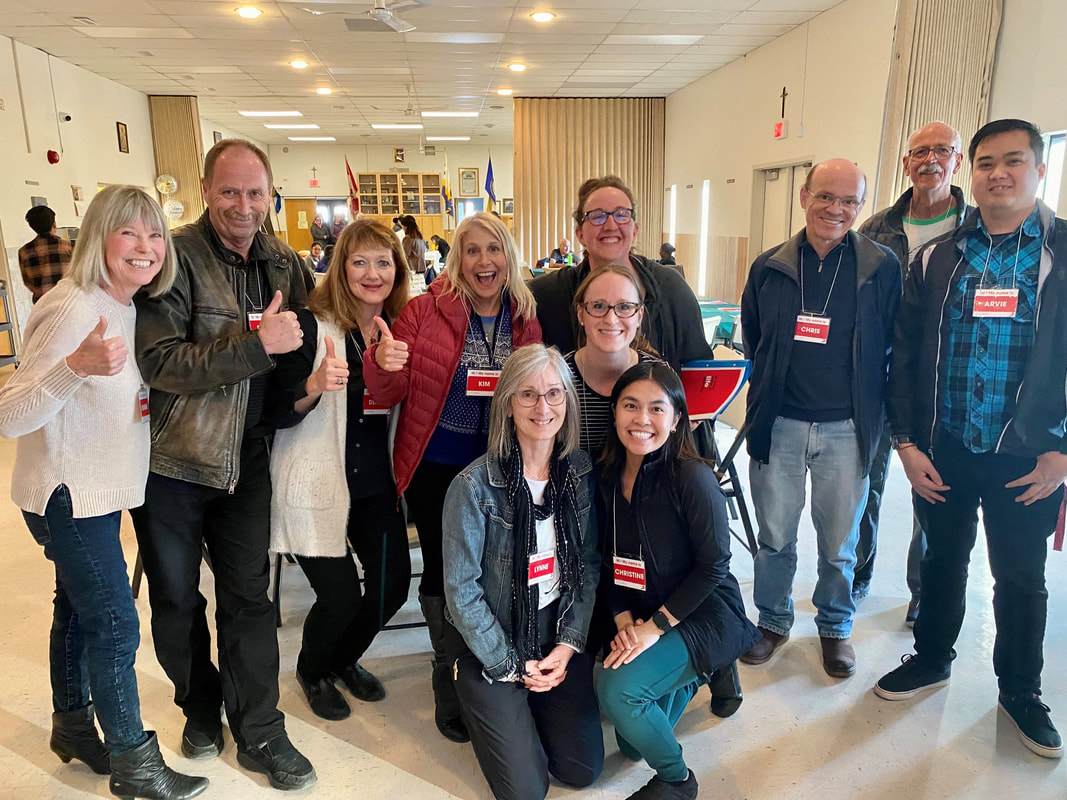
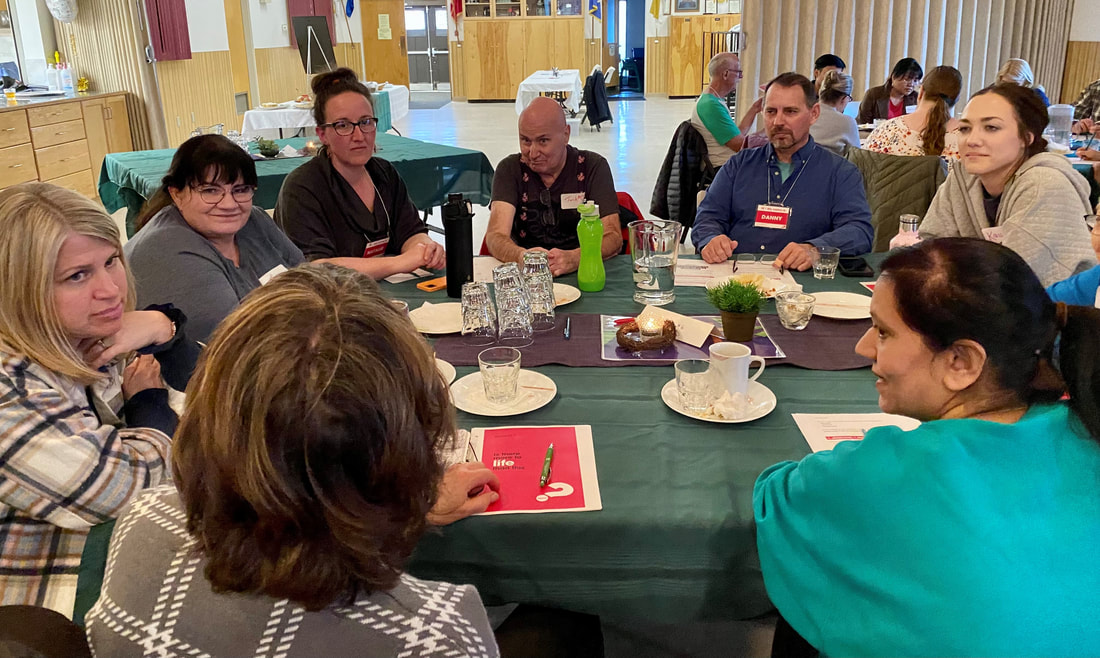
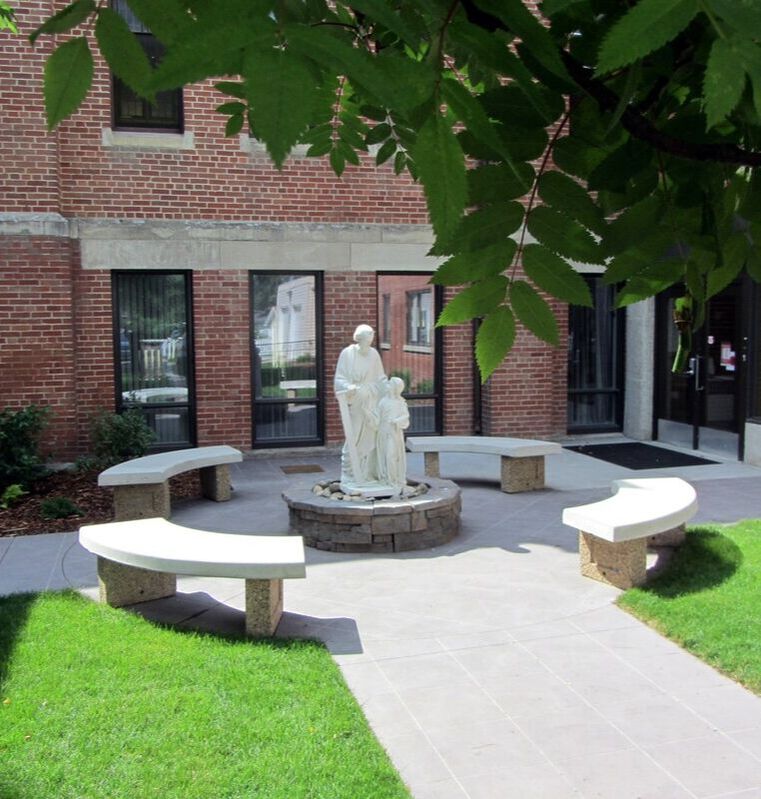
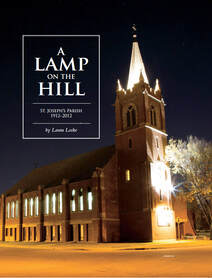
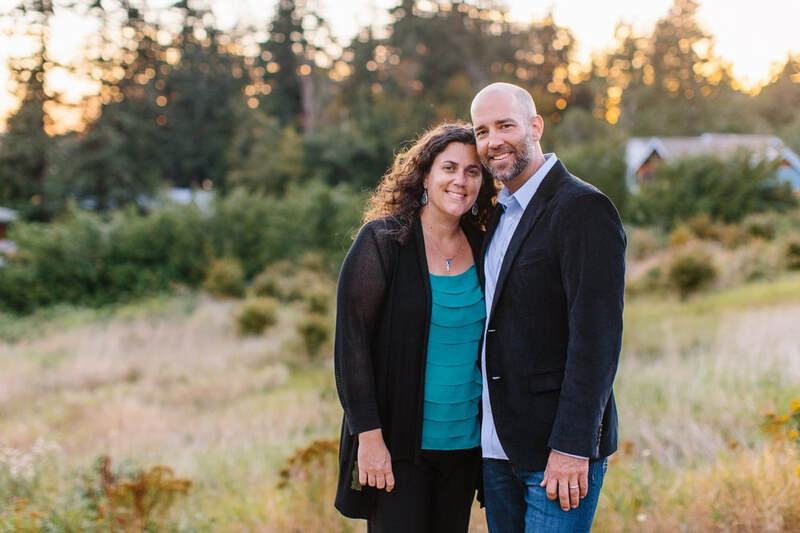
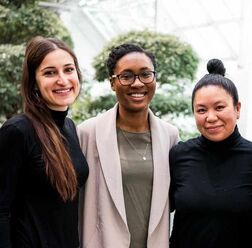

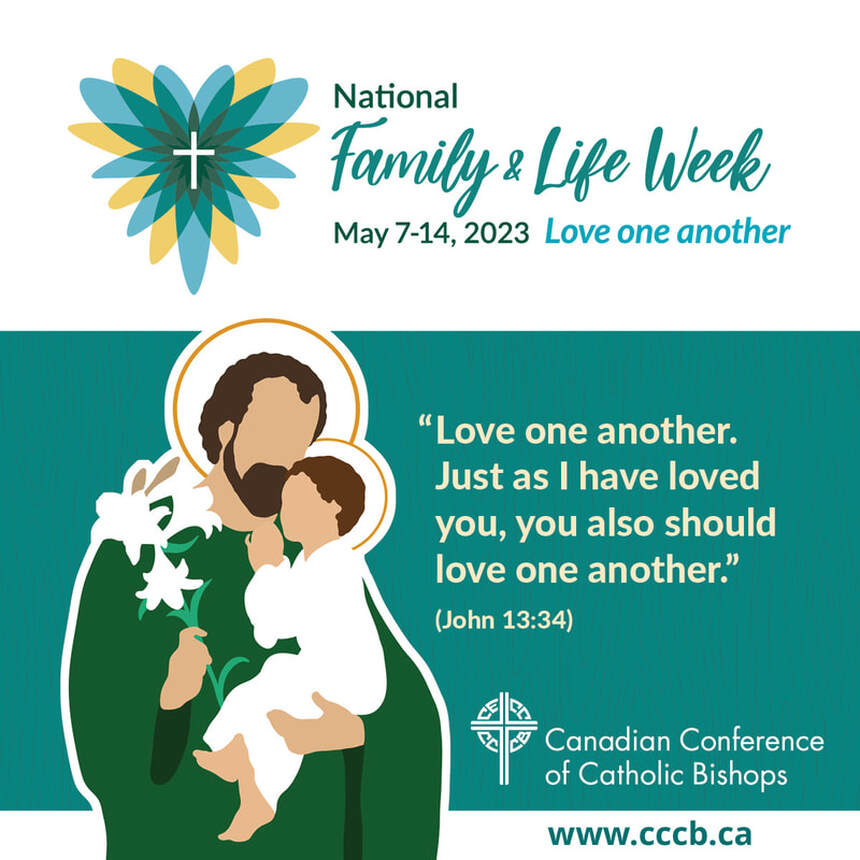

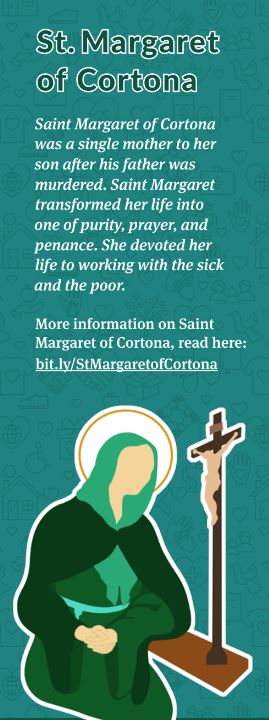

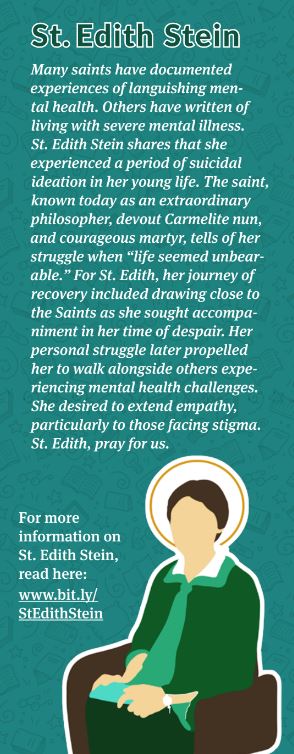




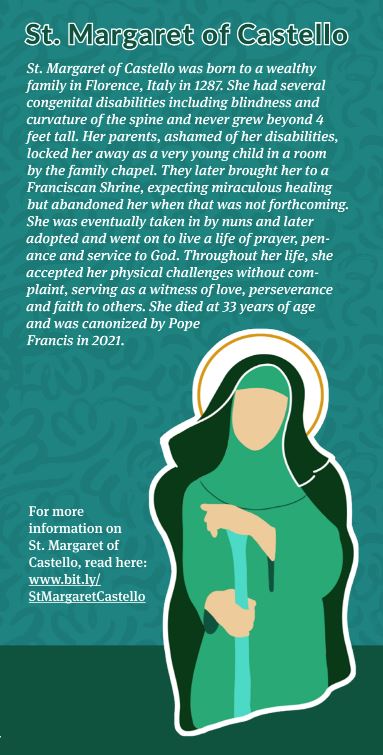


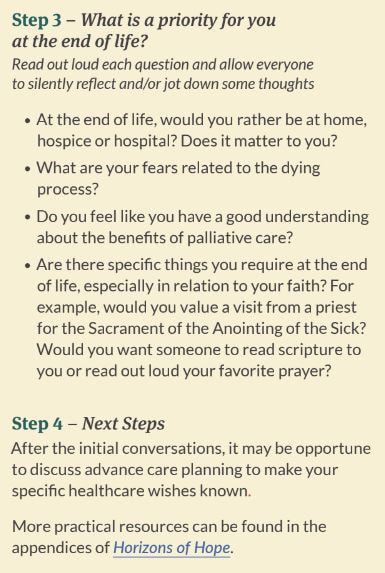
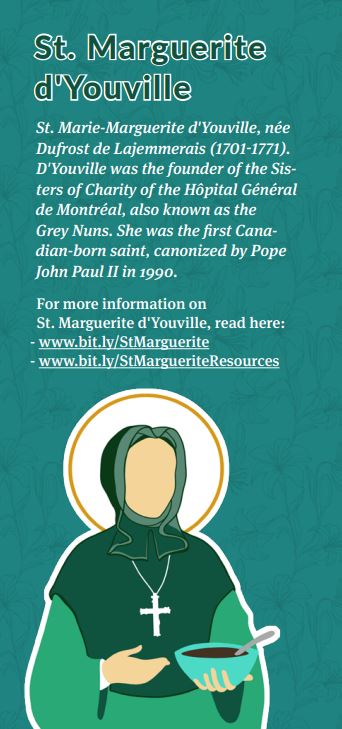



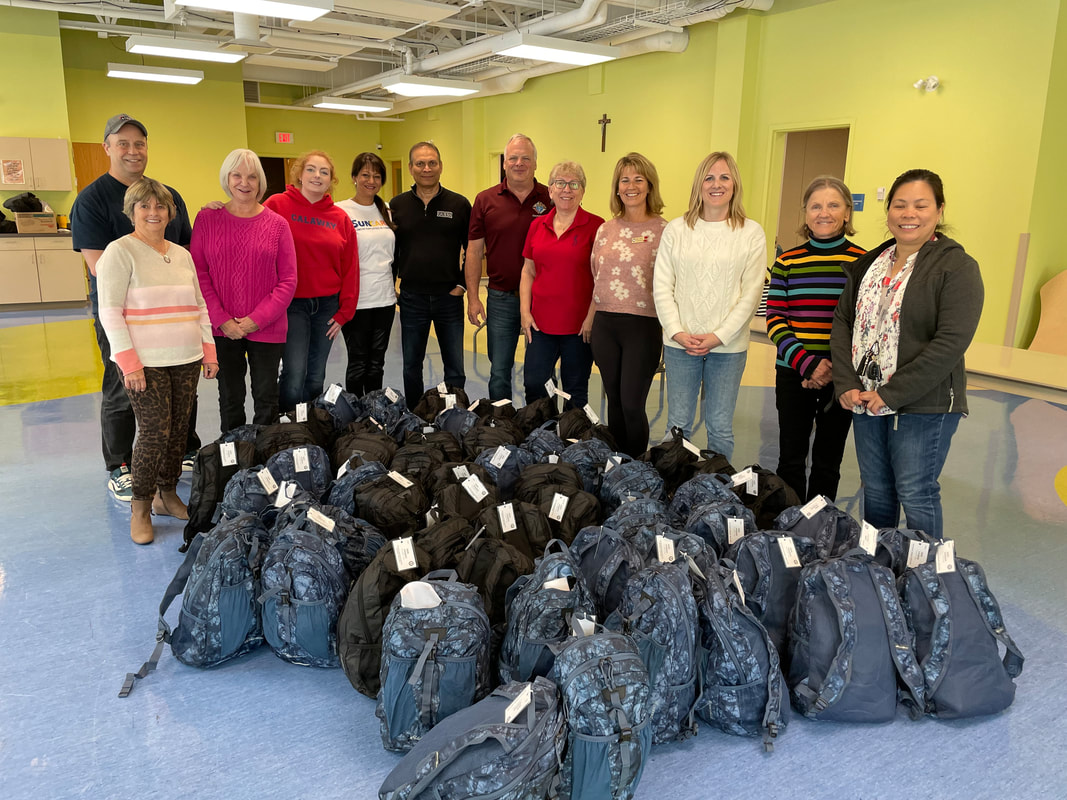
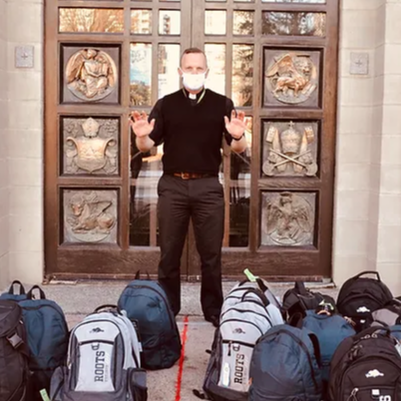

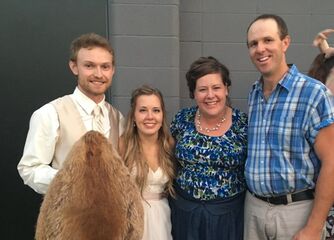


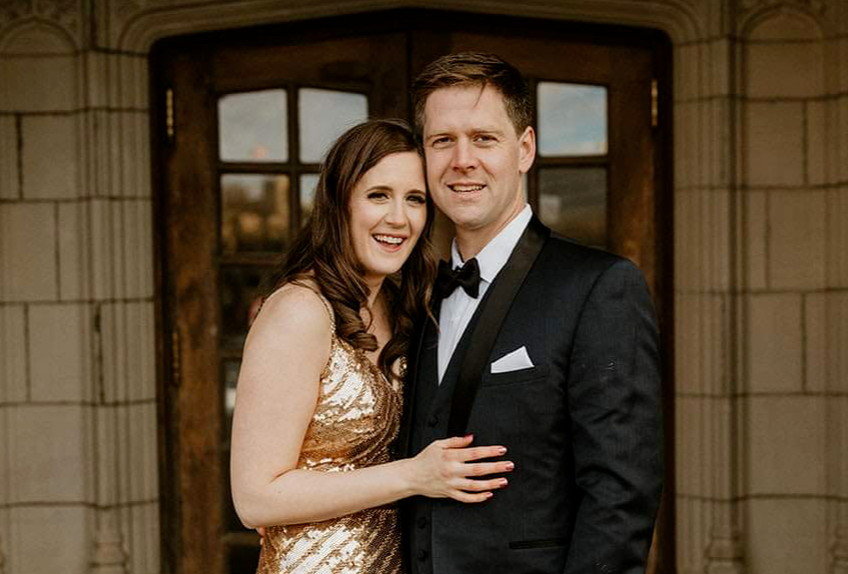


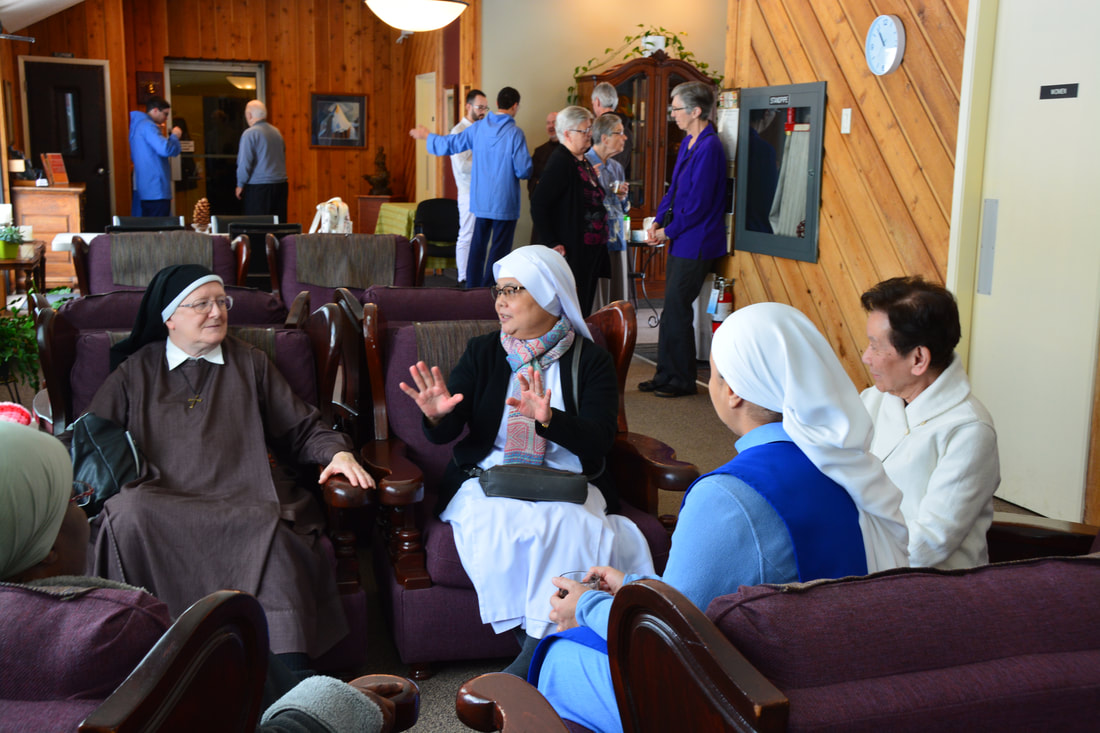
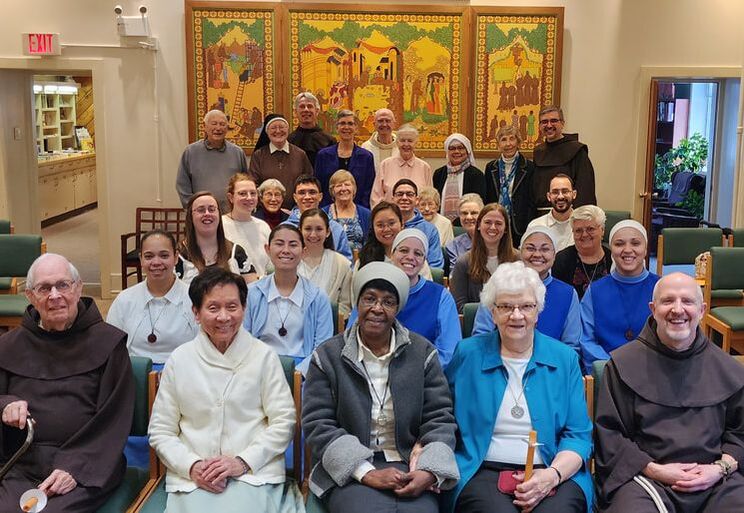
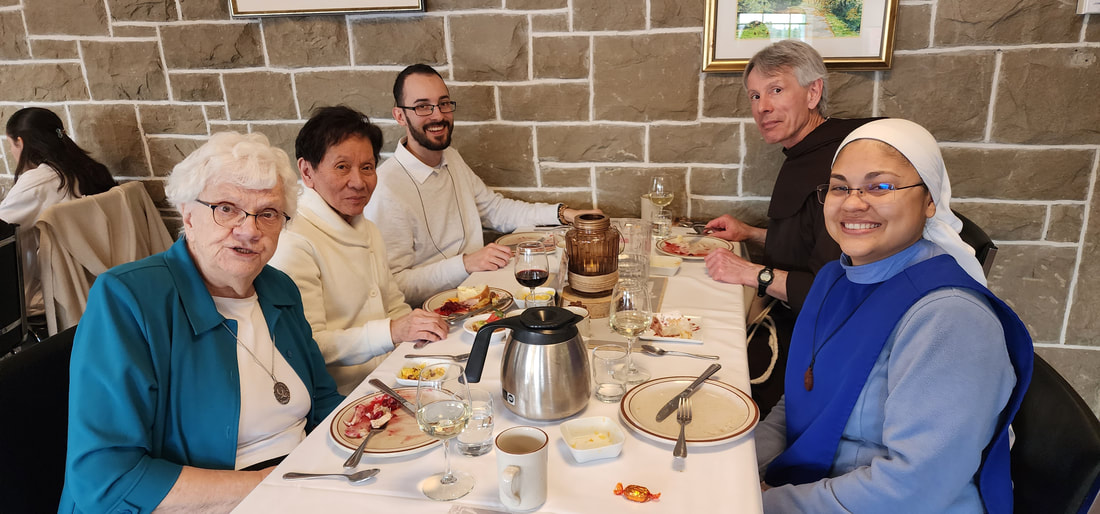



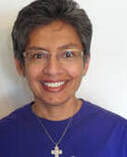
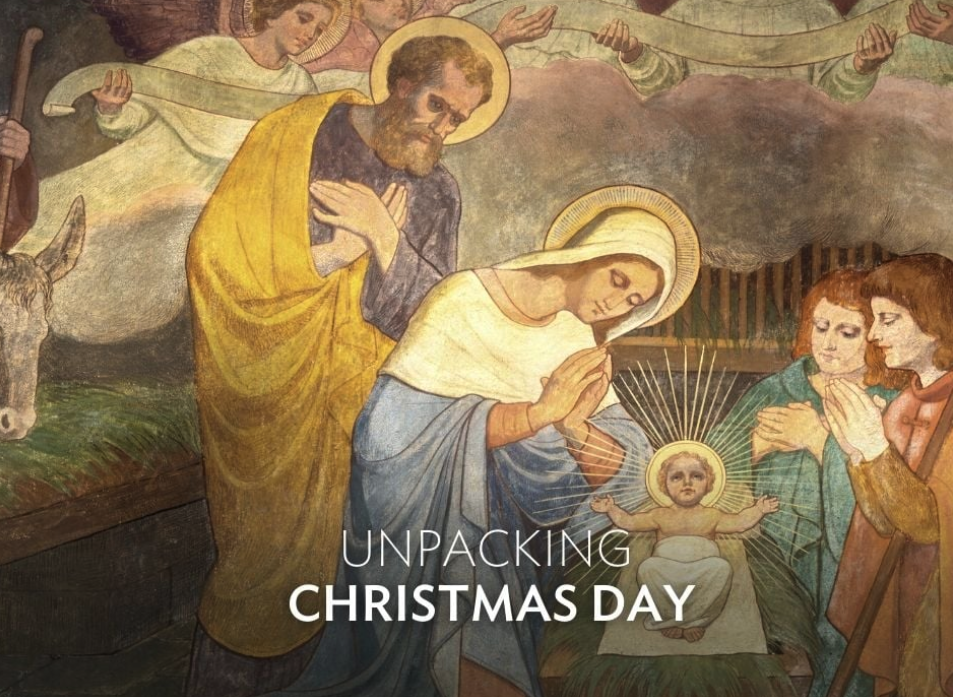
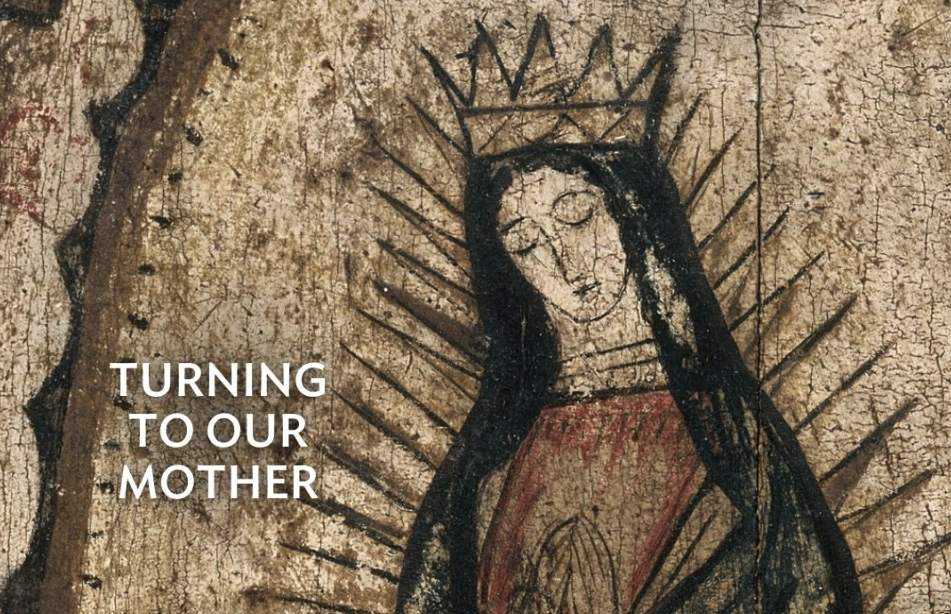

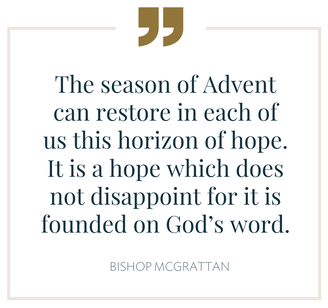
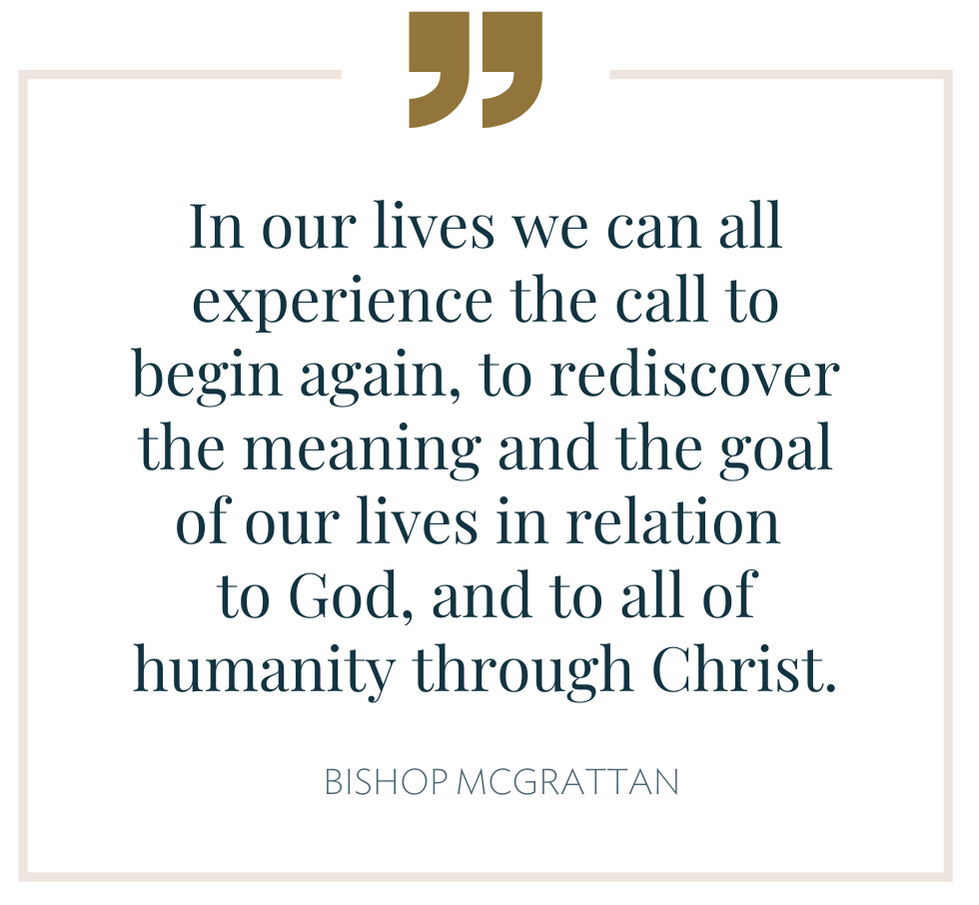
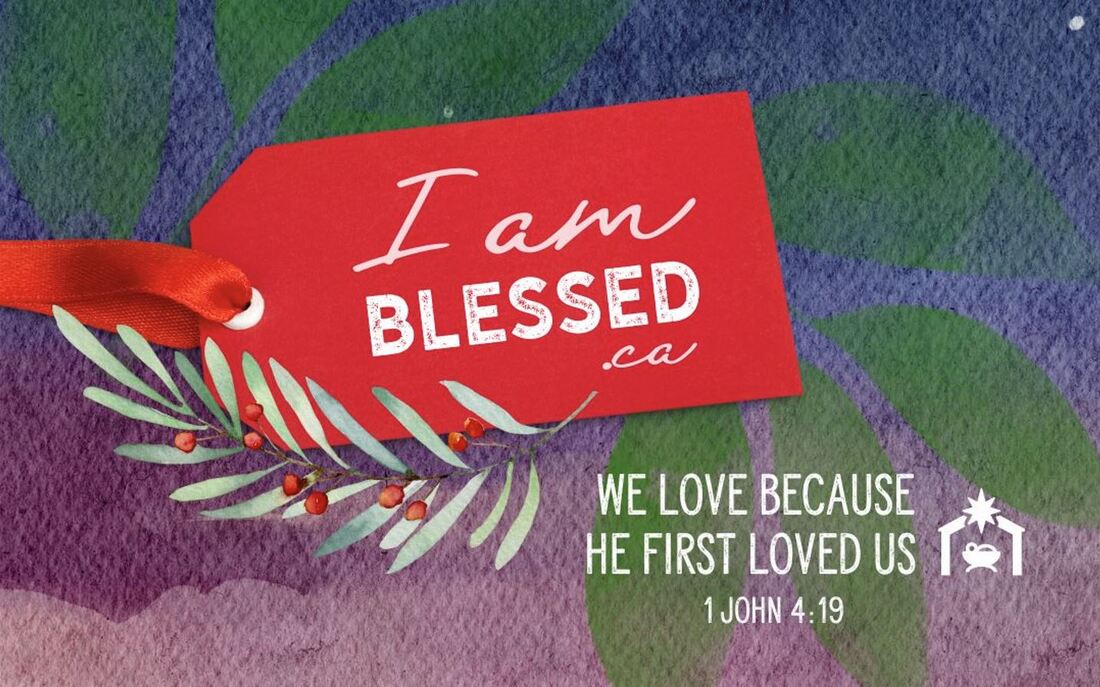
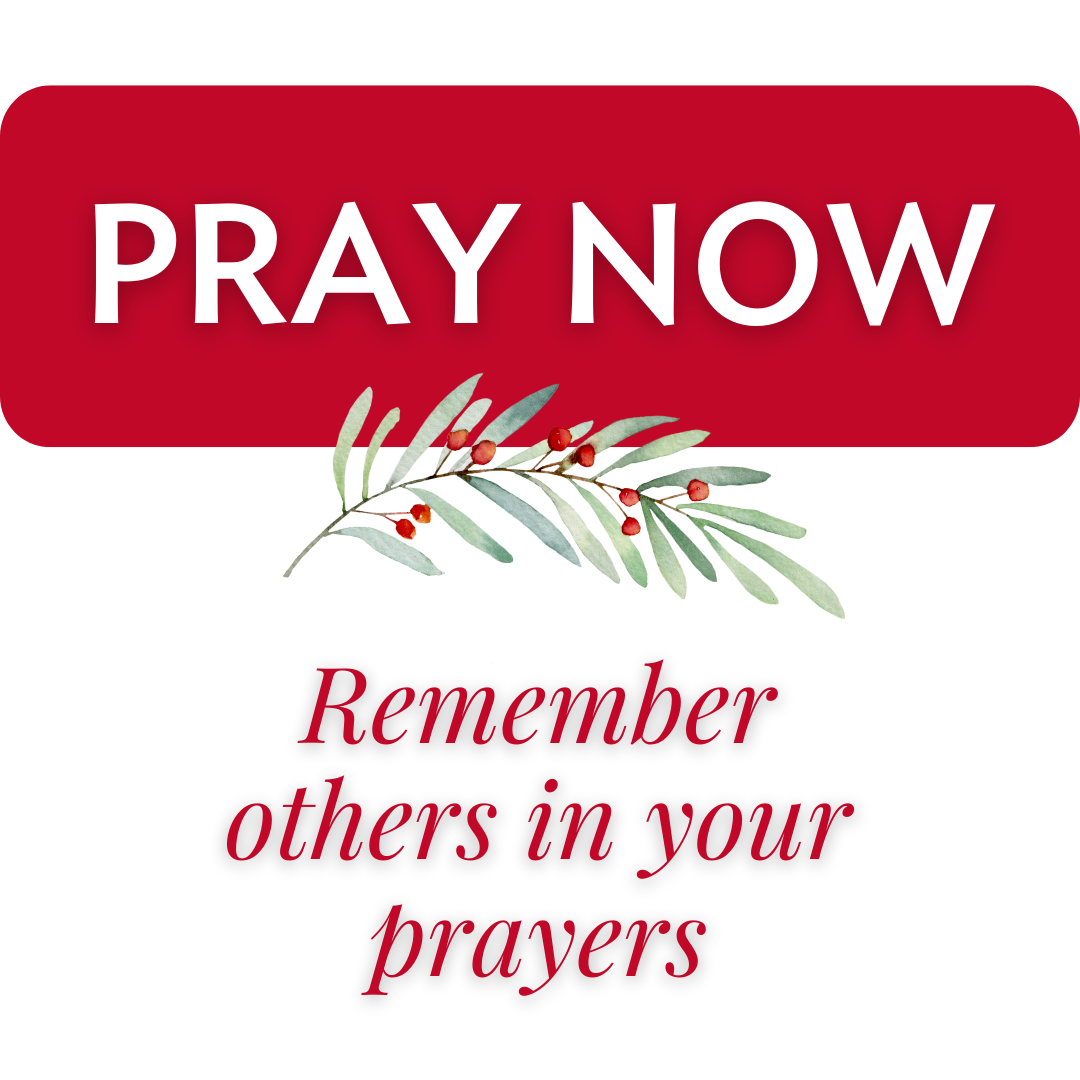


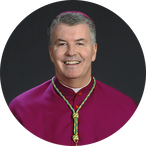
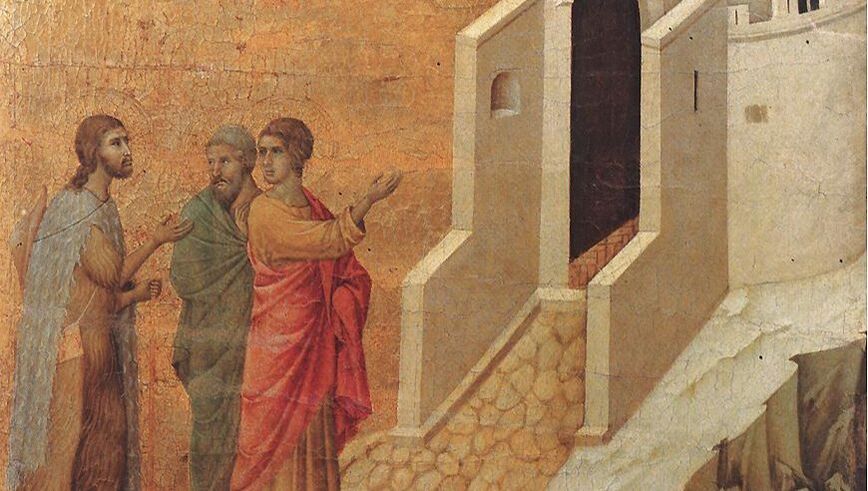
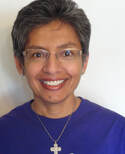
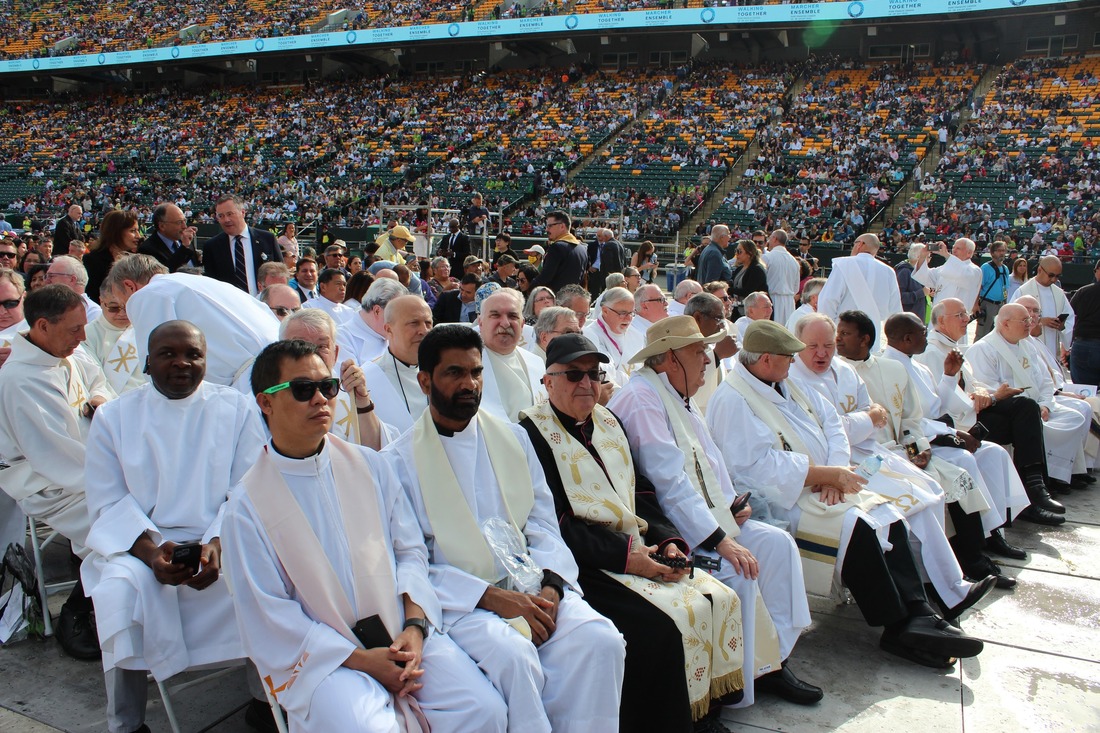
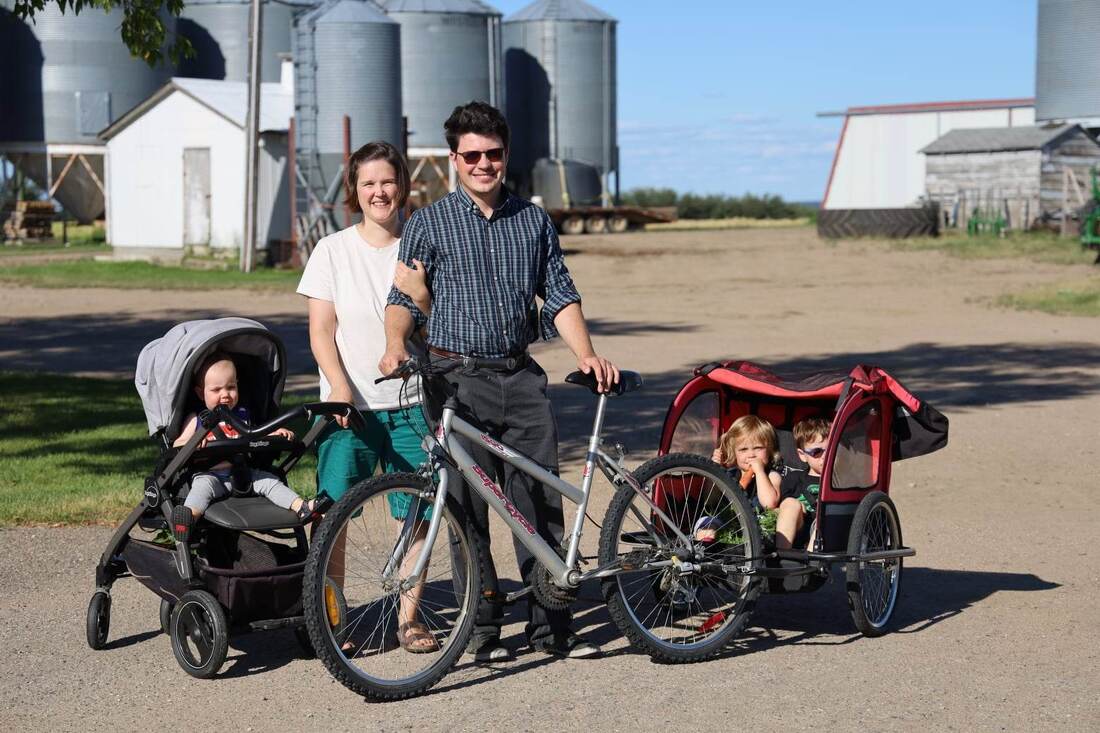
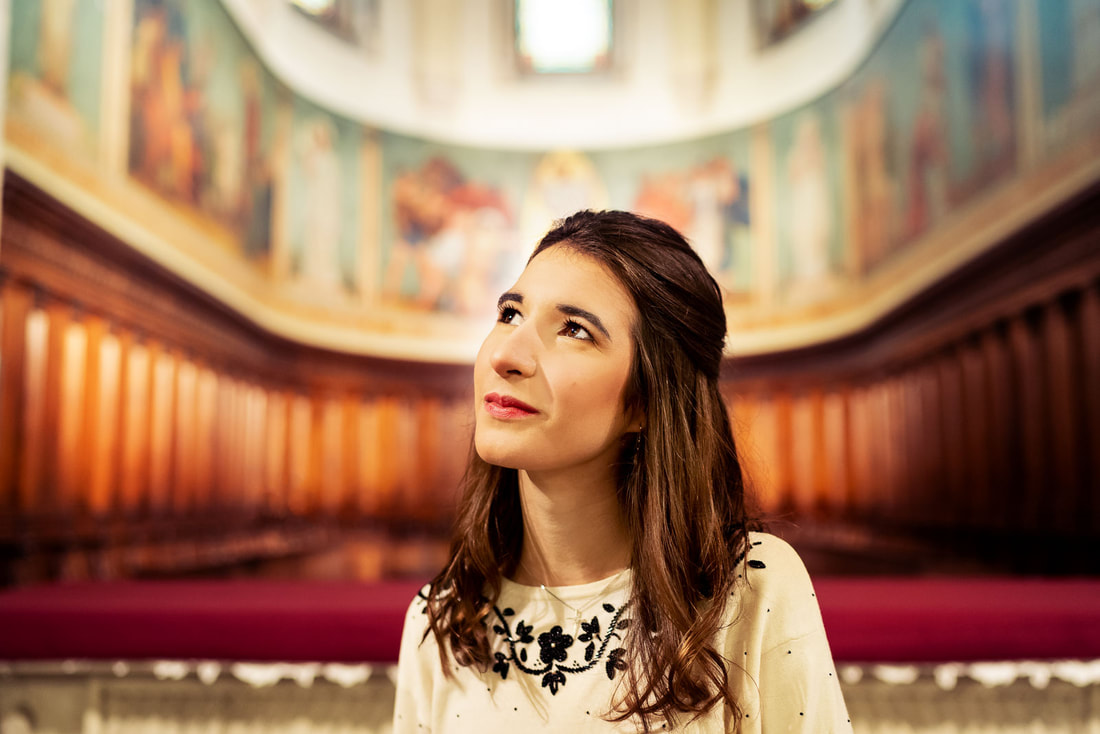
 RSS Feed
RSS Feed